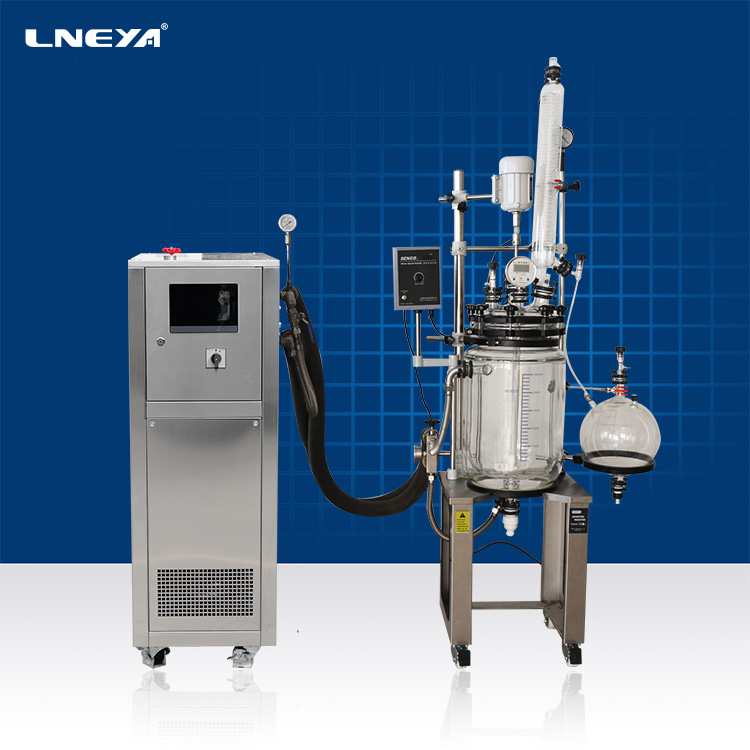Benefits of using heating and cooling equipment in the laboratory
Laboratory heating and cooling equipment (also known as: cold and heat integrated machine, refrigeration and heating cycle device) is a device that integrates cooling and heating, heating and cooling can be quickly converted, and the same medium (thermal oil) is used The medium has improved the current status of heating and cooling that require two different instruments to complete.

This equipment belongs to the high and low temperature oil bath external circulation device. Through data programming of the equipment’s intelligent temperature controller, the temperature sensing system feeds back the container temperature data, so that the controller controls the compressor to cool, and the medium in the cold tank obtains low temperature. Heat the heater to make the medium in the cavity get high temperature, and make the medium temperature in the tank reach the user’s needs through the rapid cooling and heating process, and transfer the medium to the external equipment (such as the reaction kettle) through the non-leakage shielded circulation pump. Open the valve to achieve the purpose of heat cycle exchange.
Laboratory heating and cooling equipment is a new type of laboratory heating and cooling equipment developed and produced by combining the characteristics of high and low temperature refrigeration equipment and high temperature oil bath. It integrates high, medium and low temperature instruments and equipment, and integrates high, medium and low temperature heat sources. Integrated on one device. Because the entire liquid circulation of the laboratory heating and cooling equipment is a closed system, there is no water vapor absorption at low temperature, and no oil mist is generated at high temperature. Equipped with a heating and cooling integrated container, the heat exchange area is large, the rate of heating and cooling is fast, and the heat conduction The demand for oil is also relatively small. Laboratory heating and refrigeration equipment can achieve continuous temperature rise and fall, using compressor technology under high temperature and high pressure, which can directly turn on the compressor to cool from 350 degrees, greatly providing a cooling rate, saving test time and effort.
The equipment uses mechanical refrigeration of low-temperature liquid circulation equipment, which can provide constant current and constant pressure circulating cooling liquid to meet the needs of reactors and other equipment used to reduce the working temperature of the instrument. The heating and cooling equipment used in the laboratory avoids the problem of large increase in operating cost caused by independent temperature control and artificial temperature adjustment. The heating and cooling equipment used in the laboratory uses a magnetic drive pump, without the problem of shaft seal leakage. The structure design of the cooling and heating temperature control system adopts a fully enclosed pipeline design, and uses a high-efficiency plate heat exchanger to reduce the demand for thermal fluid and increase the heat utilization of the system Rate to achieve rapid temperature rise and fall. Laboratory heating and cooling equipment adopts simple menu navigation. The clear curve display can zoom in and out the curve, and supports U disk data export, which is exported as a table.
People’s requirements for product quality are increasing day by day, the market demand is constantly expanding, and the company’s requirements for efficient automated production. Under such circumstances, laboratory heating and cooling equipment has become the hottest equipment. In addition, in recent years, the scientific and technological level has improved, and the domestic laboratory heating and refrigeration equipment industry has also developed rapidly. The technical level, equipment performance, and quality have been greatly improved. , Played an important role in production safety.
Laboratory heating and refrigeration equipment can be conveniently used in conjunction with double-layer glass reactor, stainless steel jacketed reactor, glass reactor, rotary evaporator, extraction equipment and other products to achieve multi-purpose products.
 LNEYA Industrial Chillers Manufacturer Supplier -
LNEYA Industrial Chillers Manufacturer Supplier -











